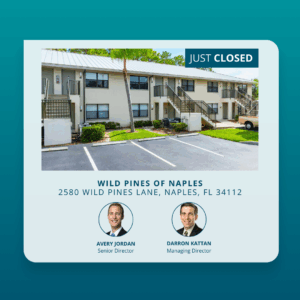As amenities become more plentiful in suburban markets, office space there is offering stiff competition to that in the urban core.
“People want to work close to home, which will benefit Dadeland and Kendall,” said Matthew Cheezem, managing director of JLL. “Sunset Place is being repositioned. Coconut Grove and Doral are becoming more than urban. Our secondary markets have become more dynamic.”
Demand is growing in areas that haven’t traditionally been office hubs, he said. “I can tell you how often we get asked for office space in Wynwood, which doesn’t exist.”
Recently, GoPro, the action camera company, came in with just such a request; the tech company resorted to converting former warehouse space to accommodate its needs, he said.
Developer Aron Rosenberg last year assembled a parcel at 2916-2994 N Miami Ave, and intends to put an eight-story, 200,000-square-foot office building with ground floor retail there, but there’s been no ground-breaking yet.
Aventura, Mr. Cheezem said, “is a tight market with high rents and a high concentration of wealth. Coconut Grove is really coming back again; Mayfair is out of space.”
On Tuesday, in fact, developer Terra announced its intention to build Mary Street, which will, “transform a 1980’s-era parking garage into 75,000 square feet of contemporary class A office space with prime street-level retail,” the company said in a release.
“Miami is growing up and filling in,” Mr. Cheezem said. “There’s a lot more connectivity between secondary and core markets,” especially with renewed interest in mass transit, and the Underlined project, which will make the space under Metrorail a linear park. “There’s a lot more sense of place outside the core markets. Secondary markets are more nuanced.”
There is concern about the market in general, he said, in that leasing activity slowed last year. “It was a down year in terms of absorption,” he said. Vacancy rose from 12.3% to 13.4% over the 2015 level, yet rental rates remain stubbornly high at $37 per square foot, up from $32 in 2011-2012.
“Is this sustainable?” Mr. Cheezem said. “It doesn’t make sense to me.”
“In general, the market is as good as it was pre-recession,” said Scott Tye, an investment associate at Franklin Street. “Developers face difficulty in that there is just no space on which to build.
“The best markets are where real estate values allow room for new tenants. West Kendall is very desirable” for that reason.
It’s also a price equation: in Brickell, a tenant would expect to pay $60 per square foot, while in Kendall the same space would rent for $25-$35 per square foot. “The sub-markets have more value and they offer all of the amenities.”
“A lot of smaller companies can’t sustain the rent in the urban core, so they have to look elsewhere: Miami Lakes, Dadeland, Kendall, even Homestead,” said Robert Granda, Franklin Street director of retail investment sales.
“Let’s say you’re relooking to grow, so you’re looking at overhead closely,” he said. “For what you’d pay for 1,000 square feet in the core, you can get 3,000-4,000 square feet in Miami Lakes, Dadeland, or Kendall.”
Contrary to belief, “People will drive for a good price and amenities,” Mr. Tye said.
Case in point: in November, the duo sold Office Suites 2 at 12905 SW 42nd St. to Adios 2 LLC for $6.7 million, or $188 per square foot. The two-story office building comprises 42 suites and sold within weeks. “We had people calling from Coral Gables,” Mr. Tye said. “By adding 20 to 30 minutes to their drive, they could get a much better value.”
“Many users want to move their offices closer to home; they don’t want to face the madness” that is Miami traffic, said Alex Zylberglait, an investment broker with Marcus & Millichap.
“The suburban market is also popular with investors who have been priced out of the urban market,” he said. “Suburban markets had a strong recovery for a few years and concessions were almost never seen, but they are still not at the level of the urban market.”
Volume of rentals is up to 6% over last year in those markets, “which is not bad, but not great either,” he said. “We’re not seeing a lot of institutional money chasing sub-market deals unless it’s a large property with corporate Tenants.”
He sees North Miami Beach and even Hallandale as future office hot spots, as they benefit from the tight Aventura office market. “There’s pent-up demand,” Mr. Zylberglait explained. “Those two cities are pro-development and there are a number of projects on the books.”
But Kendall is hard to beat, he said. “There’s a lot of density; a lot of rooftops, and not too many options. Rents are going up and landlords are happy.”



